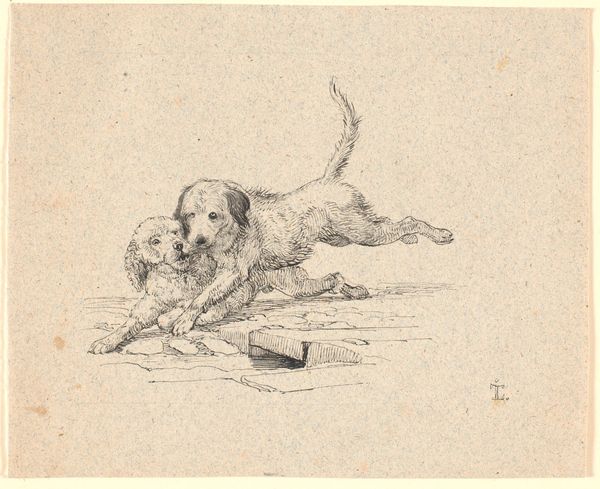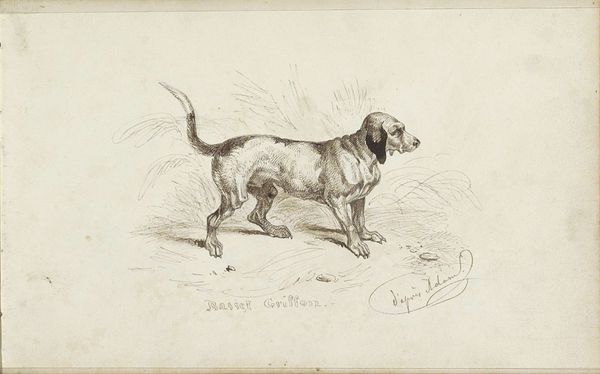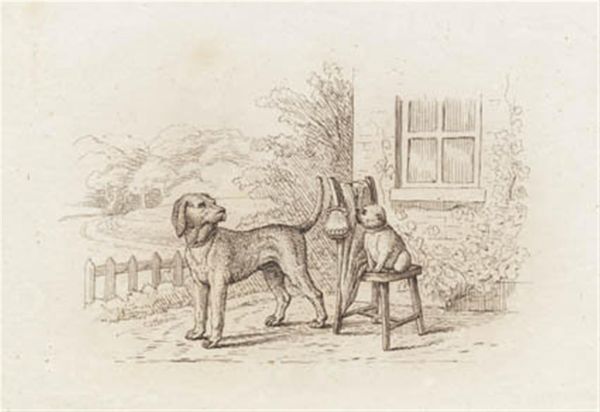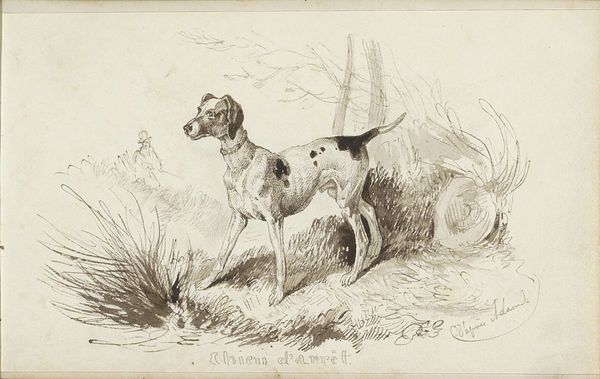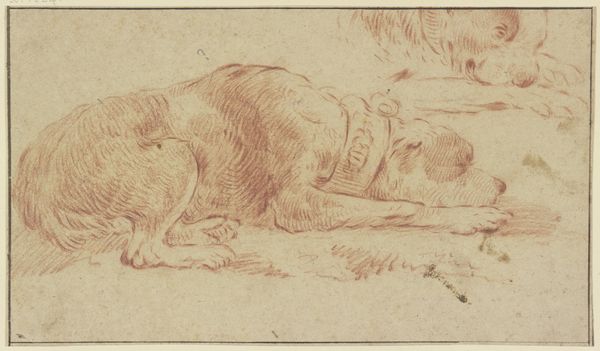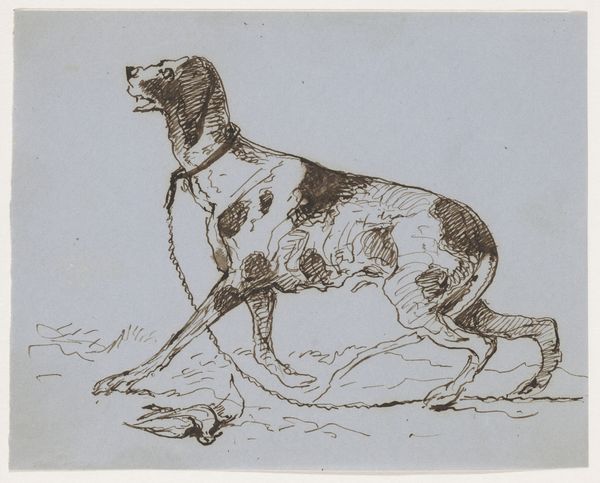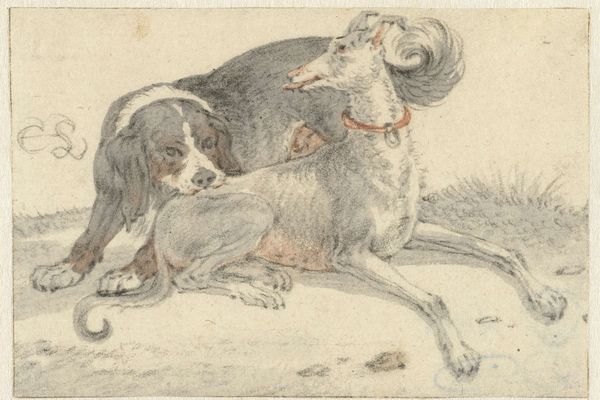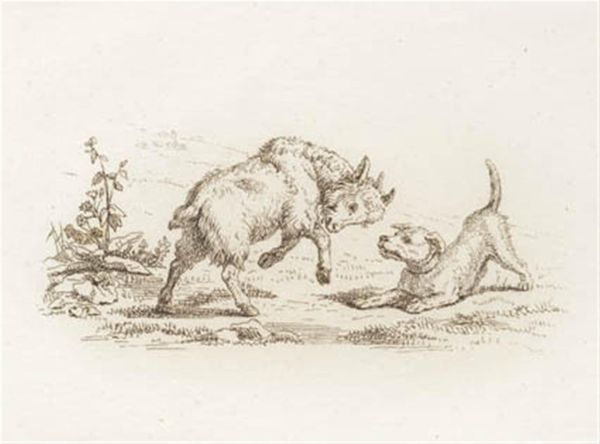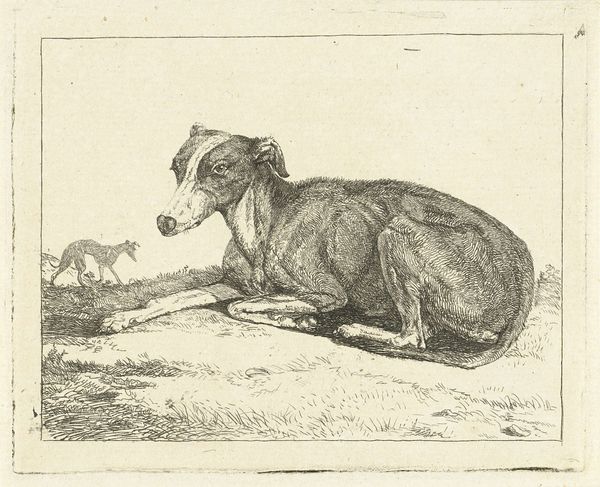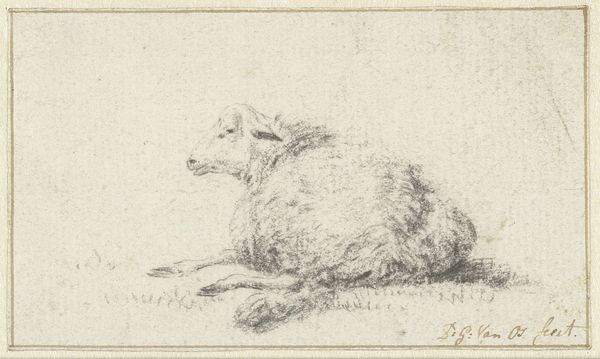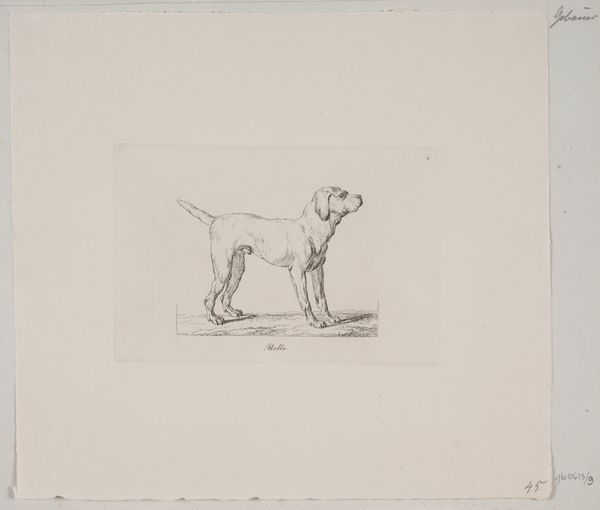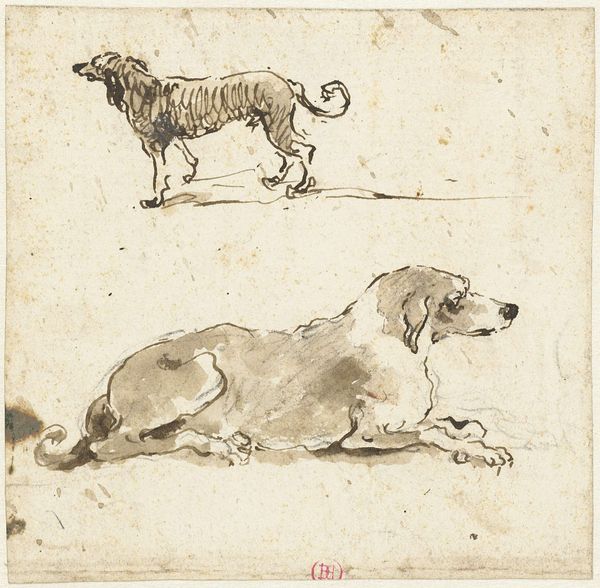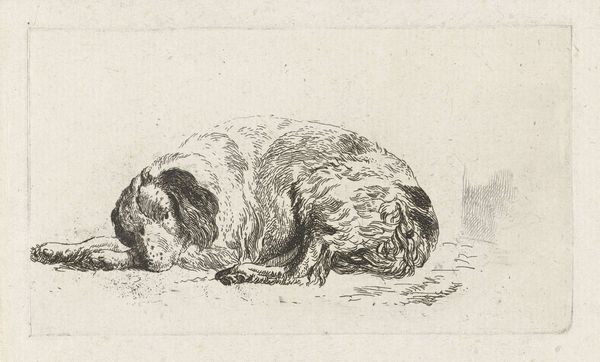
Illustration til "Halvhundrede Fabler for Børn" af Hey 1834
0:00
0:00
drawing, print, engraving
#
drawing
#
narrative-art
# print
#
landscape
#
engraving
#
realism
Dimensions: 141 mm (height) x 259 mm (width) (bladmaal)
Curator: At first glance, I'm struck by the sheer stillness. The composition is spare, the lines are delicate, yet there's a palpable tension between the two figures. Editor: Indeed. We're looking at "Illustration til 'Halvhundrede Fabler for Børn' af Hey," an engraving completed around 1834 by Martinus Rørbye. It resides here at the SMK, Statens Museum for Kunst. It’s fascinating to consider the sociopolitical influences impacting animal depictions during this period, as we consider the shifting relationships to the natural world within the context of burgeoning nationalism and burgeoning industrial economies. Curator: Quite. Rørbye's skill in capturing the texture—the dog's fur versus the hedgehog's spines—is remarkable. Semiotically, the contrasting textures speak to vulnerability and defense. The dog seems cautiously curious. His one paw is extended and its weight on the hedgehog. Editor: He was also known for his orientalism in artworks, and the use of lithographs to mass produce his artistic style, further giving popularity to what could have been a lesser known idea. Looking back, it’s important to observe the function of prints within a larger cultural dialogue about childhood. Curator: You're drawing us into how images are consumed. The formal elements—the engraving’s crisp lines, the light source falling predominantly from the left—lend a realism but one that feels quite staged and deliberate. There’s an ambiguity here between what could simply be the image of an animal friendship but there’s the latent meaning between strength and weakness. Editor: The art critic Julius Lange noted that in the early 1830s, the focus for Rørbye, and other Danish artists of the time, shifted to the social function of artwork—moving into portraiture to highlight community structures. One cannot understate the growth of this change during the decline of an absolute monarchy and into constitutional monarchy and its representative democracy. What do you think? Curator: Yes, it reflects a burgeoning consciousness of society. Rørbye really did explore some unique positions across society throughout his career, that's undeniable. Ultimately, it’s the tension between the naturalness of the scene and Rørbye’s hand shaping that very depiction. Editor: A thoughtful consideration. Now I appreciate this piece much more seeing it alongside some of its own art critical context.
Comments
No comments
Be the first to comment and join the conversation on the ultimate creative platform.
